How the textile mills of Wakefield inspired a new artistic exhibition in the town
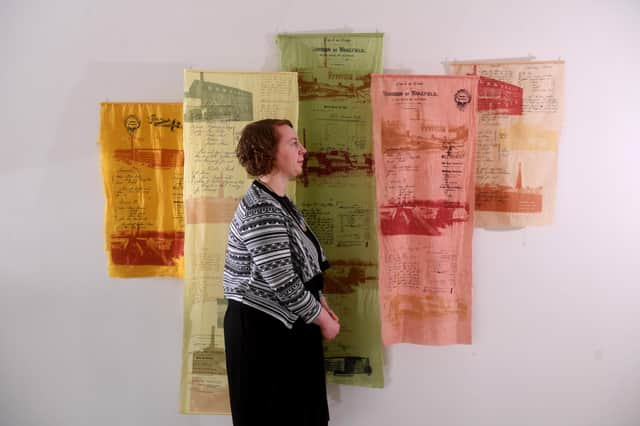

Down the decades the Heavy Woollen District was the epicentre of recycling through its shoddy and mungo production. The process of recycling rags into cloth contributed greatly to the region’s once thriving textile economy.
Living in Wakefield, within the Heavy Woollen District, and with an interest in textiles and natural dyeing techniques, brought a synergy artist and printmaker, Kirstie Williams, was keen to explore. Textiles were an essential element of Kirstie’s Textile Design degree studies at De Montfort University, Leicester, and her subsequent Masters at Chelsea College of Art.
Advertisement
Hide AdAdvertisement
Hide Ad“I really wanted to expand on my knowledge of natural dyes and learn more recipes to use in natural dyes in screen printing,” explains Kirstie.
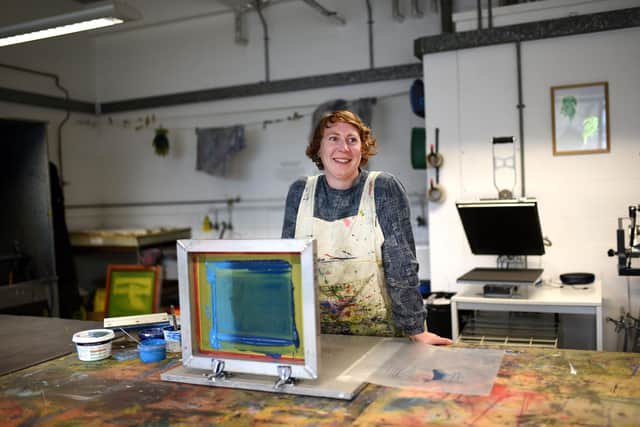

‘Mills in Colour,’ Kirstie’s first solo exhibition, at The Art House in Wakefield – where her studio is based - is supported with a Culture Grant by Wakefield Council as part of Our Year – Wakefield District 2024.
It is also the culmination of Kirstie’s six month research project to raise the profile of the city’s contribution to an important chapter in Britain’s industrial past.
Located on the River Calder, Wakefield’s extensive waterway network proved ideal for the production of heavyweight cloth in these parts and helped the city’s development as a trading centre for raw materials and finished cloths. Sadly, many of those mills, once powering the city’s textile production during the industry’s buoyant times, have been demolished or re-purposed as Kirstie discovered during her extensive research.
Advertisement
Hide AdAdvertisement
Hide Ad“I have always been interested in old buildings and the history within them. I have been interested to research where lots of old mills were. Many don’t exist anymore and I spent a lot of time looking through old archives; old recipes and documents,” says Kirstie, who is grateful to West Yorkshire Archive Service and Wakefield Libraries Photographic Collections for the original sources and imagery, featuring mills such as Alverthorpe Mill, Wakefield, and Coxley Mill in Horbury, which she has incorporated into her artwork for the exhibition.
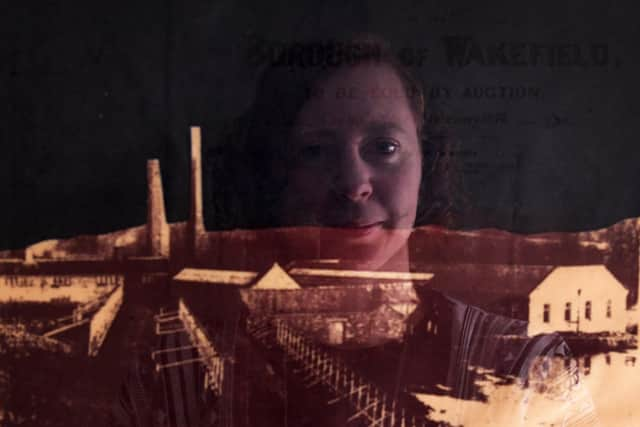

As well as framed pieces, Kirstie has created stand-lone images that have been printed on to cloth, textile hanging pieces with imagery along with old dye recipes, swatches and bottles filled with some of the dry plant material to illustrate the dyeing process.
She talks enthusiastically about the city’s former Belle Isle Dyeworks which, she says, dyed yarns for many of the woollen mills. “It fed back to a lot of mills across Ossett and Horbury. It was one of the main core dyeing works within Wakefield, but as the mills developed and as the history went on they all added on their own dyehouse to the mills.”
Advertisement
Hide AdAdvertisement
Hide AdInspired by this, along with traditional crafts and techniques, and having an interest in creative sustainable and environmentally friendly alternatives to printing inks, Kirstie embarked on some training with Slow Lane Studio led by Jacqui Symons who specialises in foraged plants to create colour for textiles, paper and printmaking.
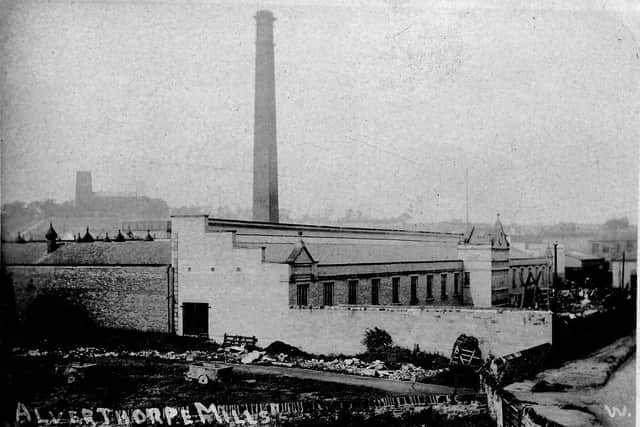

“My practice is heavily informed by colour, whether natural colour or otherwise. My interest in natural dyes grew when I discovered the range of different colours which can be achieved from different plants and vegetables,” says Kirstie, whose style is influenced by 1950s surface pattern, bold, abstract and geometric designs.
Adding Mordants, minerals such as iron, copper and alum, can help to fix the dye to the cloth. It also alters the colour which can be achieved.
“I find it really interesting you can get a whole range of colours from one plant and that sparked a bit of interest. I wanted to create more recipes because delving into the history it is interesting to see all the old hand written scripts of old recipes and I want to make some to be used in years to come.”
Advertisement
Hide AdAdvertisement
Hide AdDocumenting her colour samples in small books, Kirstie has created her own handwritten recipes inspired by historic collections. Although she isn’t into growing her own vegetables, she was previously involved in a dyeing group at Leeds Industrial Museum at Armley Mills, where she volunteered to help with the colour garden.
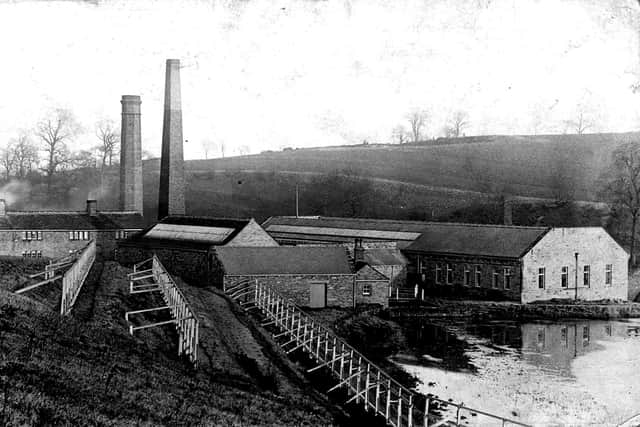

“I learnt a lot about plants which can be grown in the UK climate and how they can be grown,” she explains.
Living in the Rhubarb Triangle, in north Wakefield, Kirstie is close to the rhubarb fields and is keen to incorporate the roots and leaves of the fruit into a free family-friendly drop in workshop she is hosting on February 17 2024 at The Art House.
Established in 1994 by a group of artists, The Art House provides studios, maker spacers and galleries for artists, creative businesses and makers.
Advertisement
Hide AdAdvertisement
Hide AdKirstie is hosting drop in workshops at The Art House which will give visitors the opportunity to see the screen printing process in action. They will also meet the artist and learn more about dyeing and using natural colours from plants.
“It’s nice to show people behind the scenes, this is how it’s done, and I hope it inspires other people as well to have a go themselves,” says Kirstie, who hopes to share those techniques through the workshops she delivers around West Yorkshire. “I am happy with what I have learned throughout the project about making my own natural print inks and I hope to embed that knowledge into my creative practice moving forward. I think it is really important that we start trying to use more sustainable and eco-friendly alternatives to dyeing and printing inks and I wanted that to inform my practice going forward.
"In a way, a lot of what I have done when I studied for my Masters was conceptual of slow design – slow down in what we consume; think about quality over quantity and try foster traditions and traditional craft skills.
“A lot of my project has been under-pinned by slow design philosophies. If we can get people to slow down in what they consume and get them to understand the traditional craft skills - we want to protect those traditional skills they are important.”
Advertisement
Hide AdAdvertisement
Hide AdAs well as researching dyeing techniques to develop her own recipe samples, Kirstie visited local textile mills, among them Edward Clay & Son in Ossett, which was originally established as a Rag and Mungo merchants in 1870 and currently manufacturers of sustainable felt wadding. And she hopes the exhibition will encourage people to find out more about the area’s rich textile heritage.
“I think it is really important we understand about the history, about areas that we live in and that we learn about the heritage that is available to us right on our doorstep. I’d love it to inspire people to find out more about the mills in the area, or visit an old mill building. I’d also love it to have inspired a love of natural colour, and think about the different plants which can be grown or sourced locally.
“The textile industry is particularly fascinating to me because of the production of the textiles and I hope people might be encouraged to think about the production of textiles and be inspired to recycle cloth, perhaps through mending and dyeing – and reuse and consume less.”
“I think the textile industry is going to change a lot – it has changed a lot in the past 200 years in the period I was looking at and it’s going to be a different thing again and it is interesting being part of that.
Mills In Colour runs until April 13 2024 at The Art House, Drury Lane, Wakefield.
www.kirstiewilliams.com.